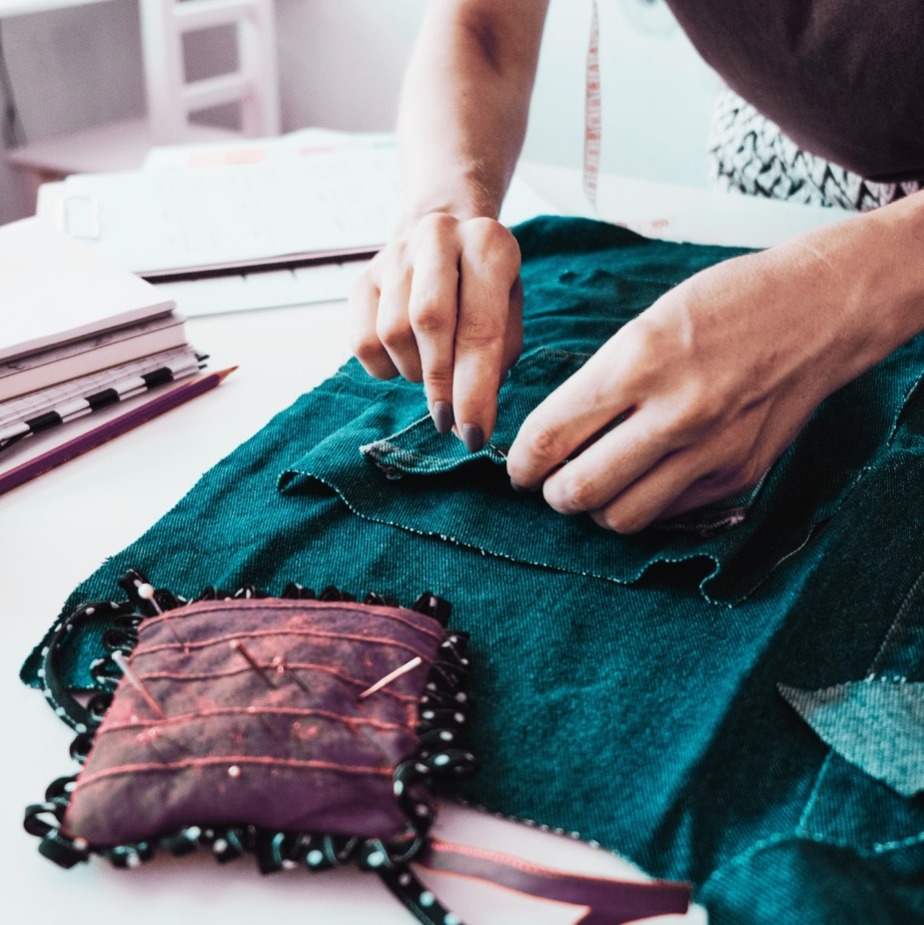Clothes & the cost of living crisis
Are you needing to tighten your belt when shopping for clothes?
You’d have to be living on a dessert island to not know that we are currently going through a ‘cost of living crisis’, even if, like me, you don’t watch the news. (I haven't done for ages. I don’t read the papers either. I switched off YEARS ago to preserve my mental health when I was struggling.) So, this week I’m talking about a couple of different ways you can tighten your belt and ease the squeeze when shopping for clothes.
Repurpose, reuse & recycle to give your wardrobe a refresh
Our grandparents generation, having lived through the days of rationing and the make do and mend era, were a dab hand at being thrifty. I remember us kids laughing at my nanna for rinsing out perfectly good plastic bags and re-using them. She always used old Christmas cards for writing shopping lists and notes on too. This was long before recycling was a thing. Writing this has just reminded me that, as a teen, I remember my mum cutting up old t-shirts to use for dusters. I felt like it was a poor persons thing to do. I felt quite ashamed and vowed that when I had my own house, I would only ever use purpose bought yellow dusters. (By the way, that has never actually happened, but I do have a collection of microfibre cloths.)
Clothes rationing actually became a thing in June 1941 during WW2 and lasted until 1949 – 8 years!. Each item was allocated a set number of points. Your individual points allowance was limited. An adult was initially given 66 points to spend for the year, a pair of shoes would set you back a whole 7 points! So, you can see how quickly you could get through your personal allowance. Everyone had to think carefully about what they could do without. It was through necessity that the Make Do and Mend government campaign came about. Everything was repurposed wherever possible, people took to sewing, and being creative because they had no choice.
Looking good helps with morale during times of struggle
It’s easy to see how the full skirts and big petticoats, that became popular in the 1950’s, were a celebration of the end of rationing and waving goodbye the utilitarian outfits that had been necessary during war time. It makes you realise, when you look back to wartime history that we have it SO easy these days with fast fashion and clothes being so relatively cheap. How times have changed, and not necessarily for the better.
Interestingly though, there was no rationing on make-up during the war, but it was taxed heavily as a luxury item. Many women turned to beetroot juice as lip stain and shoe polish for mascara as they couldn’t afford the high prices. Cosmetics weren’t rationed because there was a genuine concern that lack of interest in personal appearance could affect morale and have a detrimental effect to the war effort. Which actually makes a lot of sense. If you think about depression, lack of personal care and not making an effort, can often be a sign that someone is feeling low.
The first cut backs Britons are making is on clothes shopping
For many of us how we look is linked to our confidence and mood. When we look good and feel good, we feel more confident. It’s no surprise that for many women the thrill of wearing something new is a pick me up and can make us feel better about ourselves. However, in a recent survey by yougov.co.uk, clothes top the poll for where us Britons have started to make cut backs.
Escalating food and fuel prices are triggering changes in behaviour for many people. I was chatting with friends last week who were talking about essentially spring cleaning their current accounts. IE. going through your direct debits and standing orders to uncover any costs that you are forking out for unnecessarily – for example, subscriptions or services that you are no longer using etc. it's amazing how things mount up.
BUT if you’re doing this at the moment, PLEASE consider the knock on effect to how you are choosing to spend your money. Wherever possible try and support small businesses because it can be the difference between someone keeping a roof over their head and food on the table.
Oxfam are having a Second Hand September Challenge
Back to the clothes ...
Oxfam are currently promoting their second hand September challenge – the idea is that you don’t buy anything new during September and consider buying second hand first. You’ll still get the feel good factor of getting something new to you but will reduce your carbon footprint because you are recirculating clothes.
Charity shops are no longer the fusty smelling, dingily lit places only frequented by students any more. If you haven’t tried charity shops for refreshing your wardrobe yet you are missing a trick. So many people I speak to are quite happy to donate to the shops but don’t think about buying from them. The people who donate are just like you. Things are given the once over with the steamer before they end up on the shop floor too – although, I’d always wash something at home before I wore it personally.
FACT – did you know that charity shops will still take old clothes that are too scruffy and unfit to sell in their shops? They weigh them in as rags and get paid that way so please don’t throw stuff in the bin because it’s a bit tatty. Use it for dusters like my mum did or pass it on as rags to the chazzer. There are also textile banks at many supermarkets where you can donate stuff too.
“There is no such thing as away. When you throw something away, it must go somewhere.” Annie Leonard, Executive Director of Greenpeace USA and creator of The Story of Stuff
There are currently enough clothes on the planet for the next 6 generations!
Alternatively, there are second hand selling sites like Ebay, DePop and Vinted where you can sell your unwanted items to generate a bit of cash to reinvest in your wardrobe. I’ve decided that I'm going to give Vinted a go later this month as I have my pre winter wardrobe clear out. I don’t need half of my clothes these days, like many folk my habits have changed since covid. I go out less often and I’ve downgraded to a slightly more casual style too.
Patrick Grant from Sewing Bee blew my mind when he said that we currently have enough clothes on the planet for the next 6 generations! If you think about the Pareto principle and the fact that you are probably wearing 20% 0f your clothes 80% of the time it makes sense. How much of your wardrobe do you actually need? We really should aim to lower our fashion footprint where we can. It will not only help us be kinder to our purses but also the planet too.
Share this post:












